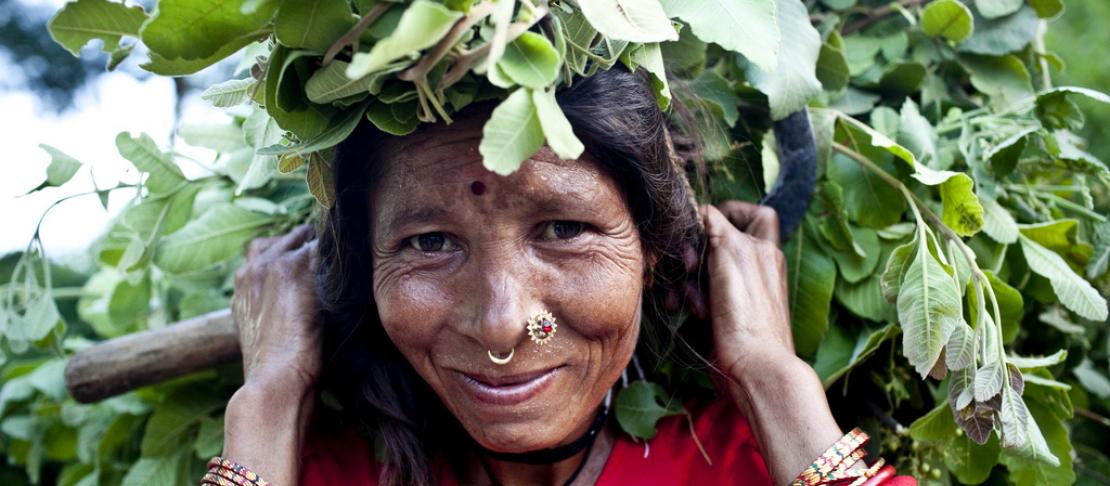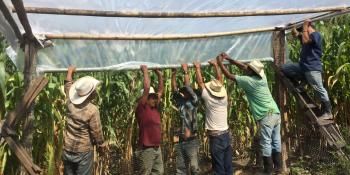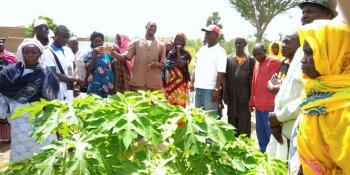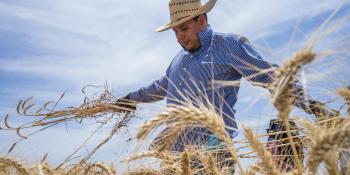Time to recognize Nepal's third gender in climate adaptation work

The term 'Third Gender' is widely used in Nepal, and refers to individuals whose gender identity cannot be squarely defined as man or woman. People belonging to the 'third gender' have to be recognized within climate adaptation programming.
In Nepal, as in much of the world, there are significant portions of the population whose gender identity cannot be wholly defined as man or woman. This includes transgendered individuals who present and/or identify as the opposite gender they were born, males who have been castrated for religious purposes, as well as intersex individuals born with characteristics that do not allow the sex to be identified definitively as male or female.
In practice, and because these distinctions are not always obvious, it is common in Nepal for individuals with gender variance to identify as ‘third gender’.
Third gender is widely used and understood in Nepal. Other countries may have their own categories or terminologies for gender or sexual minorities. Sexual orientation is also sometimes included in the Nepali context, but third gender may refer only to gender identity. Third gender does not perfectly overlap with the globally prevailing terms of lesbian, gay, bisexual, transgender and intersex (LGBTI) persons.

Not everyone identifies with the two gender categories: Man or woman. Photo: S. Hayat
Gender variation has relevance to climate adaptation programming – particularly concerning disaster response or more extreme coping strategies such as organized retreat or temporary displacement.
A common disaster risk reduction activity in the Terai, a CCAFS focal area in Southern Nepal, includes building safe houses at higher altitudes where individuals experiencing floods could take shelter.
Third gender individuals interviewed within the Systemic Integrated Adaptation (SIA) Research Program expressed significant concern about these plans as such facilities would divide people by sex for service delivery. In the event of an emergency, it is unclear how third gender individuals would be accommodated in current strategies:
“My village has a safe house above the fields, but it won’t be for me to use. I attended the planning meeting, but wasn’t asked to make monthly contributions for it to be built like the others,” said one third gendered person being interviewed. “I spend time in Bhairawaha, so my plan is to go there if there is a flood”.
Although the individuals interviewed were concerned about climate related disasters, their most prominent environmental concern was earthquakes.
The exact portion of the population that experiences gender variance in Nepal is unknown. In 2012, the Nepal census included an ‘other’ option along side ‘male’ and ‘female’, but the census was fraught with problems, leading to unreliable data.
The government also began officially issuing the standardized identity/voter cards stating third gender identity in 2013, although a small number of identity cards had previously been issued to those who actively pursued the third gender classification.
In the livelihoods survey of the focal area conducted by the CCAFS Systematic Integrated Adaptation team, 2.3% of households included a household member (eight out of 345 households) who self-identified as third gender, although this is likely an underestimation.
In the adjacent city of Bhairahawa, the Blue Diamond Society, Nepal’s main sexual minority rights group, works with nearly 1,500 third gendered individuals in the district. A common assumption among those who pursue gender research in rural agricultural communities is that sexual minorities will migrate to cities as a response to social stigma and isolation. Thus, inclusion of sexual minorities is framed as an urban and peri-urban pursuit.
However, according to SIA research, there are farmers in the CCAFS focal area that identify as third gender. All local enumerators understood the term third gender, and CCAFS researchers observed third gender individuals in a welcoming atmosphere in the Terai.
Recommendations:
- All climate change adaptation staffs should be educated about gender and sexual minorities, and prevalent terms in the areas where they work.
- Third gender disaster response strategies are necessary for inclusive programing and strategic planning. Individuals with gender variance often face stigma and social exclusion on many fronts; however, the issues relevant to climate adaptation specifically concern gender segregation such as relocation or shelter-based service delivery such as safe houses for floods. In emergency situations, gender minorities should not be separated from community-based support or be placed in danger by increasing the visibility of a stigmatized group.
- Adaptation interventions that require group work, learning from demonstrations, or participant selection also need to be planned for inclusivity. Similar methods used for other socially excluded groups, including lower castes, minority ethnicities, and persons with disabilities can be adapted for sexual and gender minorities.
- Gender programming must not be synonymous with ‘women’s programming’, particularly in contexts where significant portions of the population do not fit within the gender binary.
- It is imperative that climate adaptation incorporates gender and sexual minorities, such as third gender individuals in the Terai, in all stages – from outreach and research to planning and programming. Incorporating gender and sexual minorities may require sensitivity, education, and active modifications of existing practices, but serves the principles of participation and nondiscrimination.
For more information about Nepali third gender individuals and working with sexual and gender minorities, see the following resources:
Multiple publications by Kyle McKnight – a Fullbright Scholar studying sexual minorities based in Kathmandu:
- Nepal's Third Gender and the Recognition of Gender Identity
- Establishing a third gender category in Nepal: Process and Prognosis
Read also:
- Nepal Blue Diamond Society
- UNDP: Nepal census recognizes third gender for the first time
- UN High Commissioner for Refugees (UNHCR), Working with Lesbian, Gay, Bisexual, Transgender & Intersex Persons in Forced Displacement, 2011. Accessed 7 January 2014
Meghan Bailey is a Doctoral Candidate, Environmental Change Institute University of Oxford School of Geography and the Environment, and works for the CCAFS supported Systemic Integrated Adaptation Research Program, based with the CCAFS Research Theme on Long-Term Climate Adaptation. This guest blog does not necessarily reflect the views of CCAFS.



